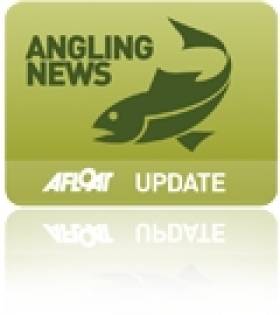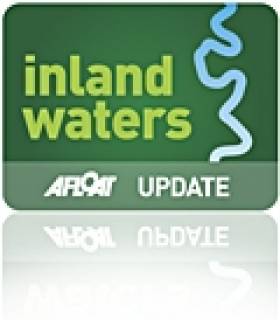Displaying items by tag: Lakelands
Midlands Waterways To Get ‘Slow Tourism’ Push In 2017
#Tourism - Boating in the Midlands’ waterways will be the focus of a major tourism push this year, as The Irish Times reports.
Fáilte Ireland’s new ‘slow tourism’ initiative will concentrate on promoting existing walking and cycling greenways and ‘blueway’ cruising routes in Midlands counties south from Lough Allen on the upper Shannon.
Minister of State for Tourism Patrick O’Donovan announced the new marketing plans in his address to the Irish Hotels Federation conference in Kilkenny yesterday (Tuesday 28 February).
“We have had the Wild Atlantic Way, Ireland’s Ancient East, and now we are working on a development plan for the Lakelands,” he said.
The Irish Times has more on the story HERE.
New Angling Guide To The Lakelands Region
#Angling - Waterways Ireland has joined Fáilte Ireland and Inland Fisheries Ireland to launch a free new angling guide for Ireland's Lakelands and inland waterways.
The guide provides an overview of the Lakelands region from Lower Lough Erne to Lough Derg, detailing the primary angling centres across the region and providing sources for information on subjects such as licences, guides and tackle shops.
The Lakelands Angling Guide is available to read or download HERE. Paper copies can be ordered free of charge from www.shopwaterwaysireland.org. Bulk orders from tackle shops and fishing outlets are also welcome via the webshop.
'Big Spring Clean' Underway In Fermanagh Waterway
#InlandWaterways - The Belfast Telegraph reports on the annual clean-up of the Glendarragh River in Co Fermanagh by local anglers determined to preserve the quality and natural beauty of their inland waterways resource.
The Kesh and District Angling Club's yearly Big Spring Clean anti-litter drives sees anglers and other volunteers boat along the watercourse to remove as much rubbish and discarded debris as they can find.
As the only waterway in the area where cruisers - many carrying tourists - can travel upstream from Lough Erne, the ugly sight of built-up litter reflects badly on the Fermanagh lakelands, according to club chair Stephen Hey.
"Over the years the water quality has been getting better, but from an aesthetic point of view it's terribly sad to come up the river on a boat and see a rubbish tip." he said, adding that suspected fly-tipping is the cause of much of the waste.
The Belfast Telegraph has more on the story HERE.
Launch of Lakelands and Inland Waterways Strategic Plan
The Lakelands & Inland Waterways Strategic Plan will be launched at four locations along the inland waterways from the 25-30th November 2010. Invitations have been issued to trade and industry, elected representatives, local authorities and the media. The launch will be followed by an information seminar to build on attendees awareness of the Lakelands & Inland Waterways and the current and future priorities of the partners.
The Lakelands and Inland Waterways Initiative is a marketing, product and destination development initiative providing a targeted and coordinated approach to tourism, recreation and hospitality, focused on attracting people to enjoy and experience the area.
Covering an area from Belleek in Northern Ireland to Limerick in Ireland and encompassing a wide corridor along the Erne, Shannon-Erne and Shannon, the unique landscape of the region has lent itself to the creation of this highly attractive initiative. A partnership has been established lead by Waterways Ireland and Fáilte Ireland with Shannon Development, Tourism Ireland, Fermanagh Lakeland Tourism and the many Local Authorities making a full and ongoing commitment to the initiative.
Joint chairmen of the partnership Kevin Kidney, Fáilte Ireland and Martin Dennany, Waterways Ireland, stated "Waterways Ireland and Fáilte Ireland have made a full and ongoing commitment to the Lakelands & Inland Waterways initiative. Working together has provided significant advantages to Fáilte Ireland, Waterways Ireland, Shannon Development and Fermanagh Lakeland Tourism and facilitated a huge step forward for the marketing of this entire region"
The Marketing Manager of Fermanagh Lakeland Tourism stated "The Lakelands and Inland Waterways initiative has offered an additional marketing platform for Fermanagh. It has provided opportunities to showcase the area to a wider audience. In particular it has been instrumental in funding and promoting a number of events in the County including the Lough Erne Challenge, Discover Days in Enniskillen and Lisnaskea and the Enniskillen Family Fun Day. By working with other strategic partners, the initiative reflects the importance that all of the partners place on this specific region and its excellent product portfolio"


























































